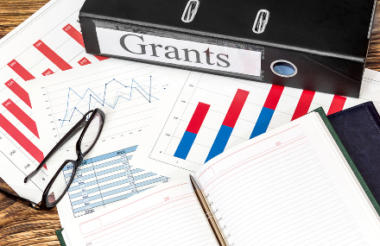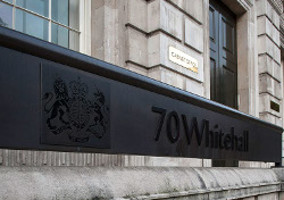Government grants can be an important income stream for charities, particularly if those charities operate in areas that garner less support from the public or work to build wider community resilience.
However, charities are not the only ones seeking funding from government; in fact, they get just a small percentage of total grant funding. And there is no one-stop-shop application process; funding pots are spread across multiple departments for different programmes.
The good news is that if you know where to look, there is quite a lot of information about what grants departments have made.
For some years, the government has been publishing a list of all the grants it makes, enabling anyone to see who gets grant funding, how much they get and a brief outline of how it will be used. This register is far from perfect, as we’ll see as we dig into the data, but it is much better than the earliest attempts.
A body called the Government Grants Management Function oversees the production of the register. The latest version was published in the summer of 2021 and covers the 2019-20 financial year, which concluded just before the Covid-19 pandemic.
Treasury grants do not appear on the register because the Treasury does not manage the types of grant that are included, but it is responsible for deciding the departmental budgets.
What is the difference between a grant and a contract?
Some might argue that there is very little difference between a grant and a contract, and it may feel that way on the ground to those spending the money.
However, the distinction offered by the government is that “grants are provided with the focus on the outcomes and impacts of the activities being funded”, whereas contracts are “the purchase of goods or services”.
Furthermore, the government says: “Usually grants are awarded to finance (or reimburse expenditure on) the recipients’ activities in order to further the implementation of government policy or public interest, where it is neither appropriate nor possible for the government organisation to carry out those activities itself.”
How much does government spend?
In 2019-20, £118bn, or 13%, of total government spending was in the form of grants. However, very little of this was directly to charities or social enterprises.
There are two main grant categories: “formula” and “general”. The first category of funding is provided based on a formula, for example the number of children needing free school meals, and given to organisations such as local authorities, schools and the police in order to deliver services. These grants account for 70%, or £85bn, of government grant spending, and are not aimed at or accessible to charities.
General grants are where government departments have more discretion to fund policy objectives, and can “allow an effective funding route for the voluntary and charitable sectors”.
In 2019-20 there were 1,732 general award schemes, which between them awarded 53,000 grants totalling £35.3bn.
So how much do charities get?
We don’t know exactly. It is somewhere between £500m and £35bn, which quite a large ballpark.
Most government departments record the charity number for organisations they fund. This makes it easy to filter the register by just those with a charity number. Doing this gives us a total of £492m, a tiny fraction of the total amount awarded via general grants.
However, not every department has used the column to include charity numbers. One is the Department for International Development, and another is the Ministry for Communities, Housing and Local Government.
These two departments both award a large number of grants to charities, but because they haven’t included charity numbers, it’s hard to quickly see how much compared to the ones they give to local authorities and private companies.
A third department, the Foreign and Commonwealth Office, has redacted almost all of the data it supplied.
Another department, Education, has included the charity number for one organisation, but not for several others that are definitely charities.
Therefore, for the rest of this analysis we’re focused mainly on those departments which did record charity numbers.
Which is the most generous department?
Unsurprisingly, the Department for Digital, Culture, Media and Sport made the most grant awards to charities, given that it is formally responsible for the sector through the Office for Civil Society. In 2019-20, it made 856 grants to registered charities.
These cover things like the Tampon Tax Fund, youth projects and various programmes to tackle loneliness. They also cover some grants made with arms-length bodies like Historic England and Sport England.
The single largest grant, £18m, went to the Football Foundation, which provides grants for grassroots teams to improve their facilities. DCMS gives around half of this charity’s funding, with the rest coming from the FA and the Premier League.
Seventeen charities received grants of over £1m. This included two grants totalling £8.9m which went to the Access Foundation, which carries out a range of capacity-building activity.
At the other end of the scale, the smallest grant award was £109 to cover roof repairs at a church.
Most, but not all, DCMS funding was awarded after an open call for applications and a competitive process.
Around a quarter of the total amount, £27m, was distributed without an open call for applicants. This included grants where only one charity could realistically carry out the work. For example, there was a £1.2m grant to the Charles Dickens Museum to help it acquire the Nason collection of Dickens' artworks and other artefacts.
Elsewhere the Centre for Acceleration of Social Technology (CAST) was given £1m to support projects that help charities get the most out of digital tools, and the British Red Cross received £70,000 to set up the National Emergencies Trust.
Other departments
From animal welfare to debt advice or international development, charities as a group touch on almost everything the government is handling.
It is therefore not surprising that different parts of the sector are eligible for grants from across government, and not just DCMS.
In fact, the amount DCMS gives to charities is only a little over £100m – just one-fifth of the total amount of grant funding that we know goes to charities, and likely an even smaller fraction of the real figure.
For example, the Department for the Environment, Food and Rural Affairs distributed nearly 300 grants to charities in 2019-20. These were largely to conservation charities and flood prevention projects.
Elsewhere, the Ministry of Justice made nearly 192 grants to charities that support people who have been victims of crime and those that work to prevent reoffending. Here, the proportion of grants made without an open call for applications was higher, with 101 made in this way.
Limitations
It must be said that the current version of the grants register is a vast improvement on earlier attempts, in no small part because it is now produced to align with 360Giving’s data standards, making it easier to compare government grantmaking with that of other funders.
However, there are still issues. Obviously the biggest is that, as we’ve already highlighted, inconsistencies between departments mean it is still nearly impossible to work out how much charities have actually received in government grants.
Beyond that, there are a number of unfortunate caveats to the data which are set out in the accompanying commentary published by the government.
The Department for Business, Energy & Industrial Strategy (BEIS) describes its data as an “an approximation of the grant schemes”. BEIS says it is “working with the Government Grants Management Function to improve data quality and completeness for the FY 20/21 publication”.
Others say similar things. DCMS says: “Because of the current limitations of GGIS 1.0, certain third party grants which have been uploaded as multi-year have been flat profiled rather than following the actual profile pattern of the grant.
“This will be remedied in GGIS 2.0, to be launched for 2021 data publication. However, this has resulted in the total budget figure of our awards being higher than the total budget figure of our schemes.”
Finally, the data is still classified as “experimental” instead of official. Yet this is the third attempt at producing this data. The first attempts were released in 2015, and it has been an uphill battle to get data published in a way that is easier to understand and comparable.
Six years on from the first release attempts, it is disappointing that the data is still incomplete and unreliable. The government has recently committed to working with other agencies to get a better understanding of the sector, so let’s hope that this includes finally getting its own grants data in proper order.
Related articles












